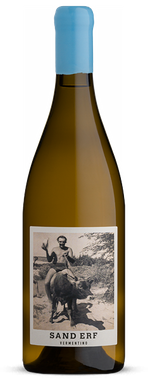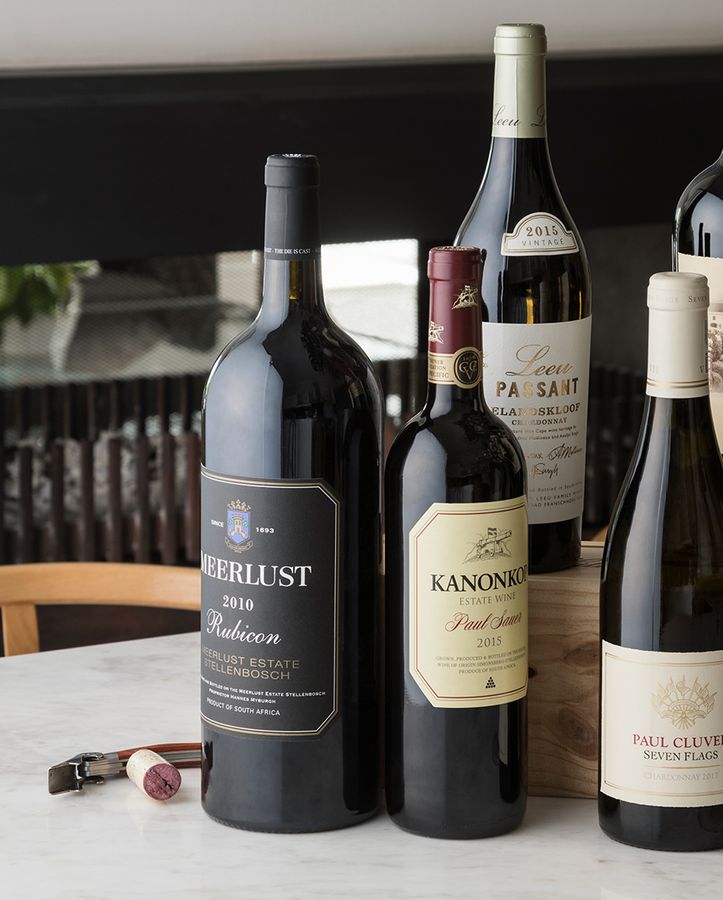Now I don’t know about the swear words because West Coast people are also VERY ordentlik (decent). Thus, I cannot verify Sakkie’s claim, but I can imagine the swear words to be quite creative, wide-ranging, and FIGURATIVE (metaphorical even). Unfortunately, as an Afrikaans girl, you will not always be treated to such language from the boere, but I would LOVE to be a fly on the wall – given my thing for words.
Sakkie has been hailed a cult figure by international critics, such as Greg Sherwood. “Hotly tipped for great things in the future.” Says Neal Martin. And he’s delivered. His single variety Chenin, the Revenge of the Crayfish, and Vermentino Sand Erf are quite literally the stuff of CULT FINDS, unicorn wines they say.
Made from obscure parcels of forgotten vines in make-believe-sounding places like Koekenaap and Lutzville (Vredendal doesn’t fall into the make-believe category, I’ll grant you that). More importantly from grapes that were relegated to the bulk wines that so dented our reputation as a wine-producing country. It took a guy from Koekenaap, who LOVES this strange, rugged place. Whose grandfather, by all accounts, rode bulls on boring Sunday afternoons or photographed his firstborn son with a pipe quite seriously, seemingly the embodiment of the West Coast. To make us UNDERSTAND the value and the true identity of West Coast wines. I’ve read many of the rave reviews, and I think you can boil down the identity of a West Coast blend to this: Glassy, crystalline purity, coastal salinity, and an almighty freshness. Specifically in THIS, Sakkie’s blend of strange Weskus grapes.
The Full-On Misfits is a white blend that changes yearly, “esoteric” Greg Sherwood said of the last vintage. This year, the blend is one of Chenel (a cross of Chenin blanc and Ugni Blanc), Palomino, Chenin, and Colombard. From old vine vineyards, with a photo of Sakkie’s father as a little boy with his father’s pipe. As always, we were only able to secure a FEW bottles, but the relevance of these wines to the identity of the West Coast signals an exciting future, and thus a notable release.
As such, we simply HAD to ask Sakkie a few questions for future reference, and in the inimitable spirit of a West Coast man, he answered them expansively. So if YOU want to know more about Sakkie Mouton Family Wines, we suggest you get it directly from the proverbial horse’s mouth.
How many wines have you made up until now, and what were they in terms of style?
Currently, I have three wines in my range: The Revenge of the Crayfish a Chenin Blanc, the Full on Misfit a white blend, and the Sand Erf a Vermentino. The Crayfish and Sand Erf are both single cultivar wines made from varieties that I feel reflect the West Coast terroir best. They are fresh wines that showcase the beautiful west coast salinity, while the Misfit is usually a blend of different areas and varieties from the West Coast that I find interesting and unique. The Misfit will be something different every year.
How did the Full-on Misfit come about?
Because there are so many weird and interesting vineyards scattered around the West Coast, and because I am a curious person when it comes to vineyards and varieties, and the fact that I love white blends in general. I decided I had to make wine from these vineyards and see what I could get from them. The name Full-on Misfit was an easy choice as most of these varieties are seen as a bit weird and not commercial in terms of modern winemaking. The misfits of the wine industry.
Tell us about Chenel? Why did you include it in your blend, and do you ever see it standing alone?
Chenel is a truly South African variety that was grafted by Professor Chris Orffer and first planted in 1974. The mother block is still maintained at Elsenburg agricultural college. The first time I encountered Chenel was at Elsenburg college when Lorraine Geldenhuys, the lecturer at Elsenburg, made an orange wine with it. After a month on the skins, it still had great balance and acidity with an intense freshness which I found very interesting. As I travelled around the West Coast I found a neighbour close to us who had 8ha (only 28ha left in SA according to SAWIS) left and decided to give it a go. It’s a neutral variety but with some skin contact and a bit of vineyard work, it can be truly great. For me, it’s the perfect variety to add a bit of natural acid to a blend, especially given the fact that it holds onto this acidity in the West Coast heat. Combined with some interesting nutty tones it adds an extra layer of complexity to any wine.
I am going to work with Chenel more in the future to see if I can maybe make a single variety wine from it. But for now, it’s a great variety to blend. Chenel for me reflects South Africa’s heritage!
Is your grandfather still alive? He seems like the spirit of the West Coast, does he drink wine?
Unfortunately, my grandfather passed away in 2012, and never had the chance to experience this part of my wine journey. It's sad, but that is why I feel that I need to honour him in any way possible. He was the original Sakkie that started farming vineyards on our farm. To me, he expressed the West Coast lifestyle in a very honest way. In those days you didn’t travel too much, and the place where you were brought up, was all you knew. Every picture or story I hear of him is an honest representation of the lifestyle back then and the person he was. He was a big Roodeberg drinker, all the farmers back then still had KWV shares, which made those wines cheap and easy to come by.
What is it that you love about the West Coast? You talk a lot about how weird and wonderful the people of the West Coast are - can you give us three character traits of a real West Coast person?
There are no pretenses in the West Coast. What you see is what you get. To make it there you must be strong-willed and someone willing to live life as honest as possible. The West Coast leaves a deep footprint on its people (and the wine). They (the people and the land) are rugged and very straightforward, but underneath it all, there is great depth to everything. It’s a place with intriguing stories and traditions, maybe because of its isolation. Most things that happen around there are super honest and interesting as that life is all you know. Also, the West Coast has the best swear words in all of South Africa.
What do you think the overall style of your winemaking is? What do you want it to be known for, and how do you see it evolving over the next five years?
I don’t try to focus on a style but rather as honest an expression of the West Coast terroir as possible. This will change all the time. Each year I learn more about the vineyards and the terroir. I am putting in more time to perfect the vineyards so I don’t have to worry too much about reflecting a style but rather just making the best wine from what the vineyards can give me. I want people to taste place and not a person.
Your support or goal to help protect the West Coast is a worthy one. How did you get involved? Do you think there’s hope?
I drive to Koekenaap every other week and I see firsthand the destruction these mining operations are causing. I knew I needed to help somehow. The Protect the West Coast initiative was the first I decided to approach as I think that my wine and story can make a positive contribution to their cause. In all honesty, it’s time for me to give something back to this place that means so much to me.
Help Protect the West Coast here.
Do you see winemaking and grape growing becoming a more popular thing to do in the West Coast?
The West Coast is a relatively new appellation in South Africa and will take some time to be recognized. The overall idea of viticulture in the West Coast needs to change from bulk to quality. Then we will be able to present it as a quality-driven appellation. The vineyards and terroir are there, we just need honest vintners to start shaping the true identity of the West
Coast.
Do you take any inspiration from international wines? Where and why if so? And if not, ALSO, why?
I am a big fan of Sicilian wines. There are a lot of style similarities and circumstances surrounding the vines. The wines of Greece are also of great interest, their salinity reminds me of the West Coast. In the next ten years, I'd like to travel some more to see how other winemakers in coastal regions deal with winemaking and viticulture in general. And learn.
Alternatively, do you have any local inspiration in making these wines? Who or what inspires you in South Africa?
This is the best time in South Africa’s wine history to be a young winemaker as there are more than enough inspirational winemakers going around. You do not have to go around the world to find someone inspiring, they are here.

